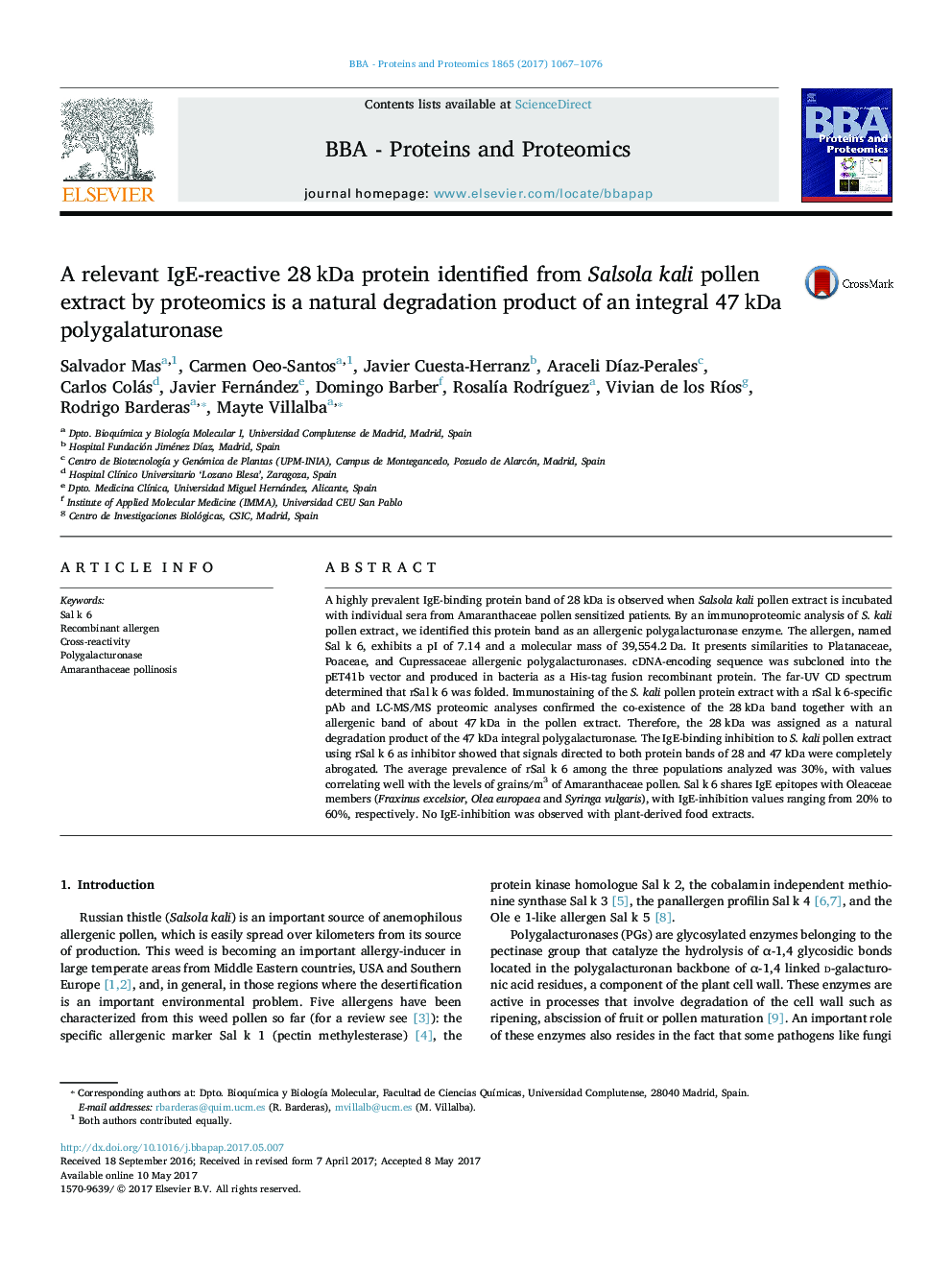| Article ID | Journal | Published Year | Pages | File Type |
|---|---|---|---|---|
| 5132000 | Biochimica et Biophysica Acta (BBA) - Proteins and Proteomics | 2017 | 10 Pages |
â¢The allergenic polygalacturonase from olive pollen -Sal k 6- was identified by immunoproteomics.â¢A recombinant form of Sal k 6 allergen has been produced in E. coli and characterized.â¢Sal k 6 prevalence ranges from 19% and 39% in S. kali sensitized patients.â¢Sal k 6 induces basophils activation from blood of S. kali pollen-sensitized patients.â¢Sal k 6 is involved in pollen-pollen cross-reactivity.
A highly prevalent IgE-binding protein band of 28Â kDa is observed when Salsola kali pollen extract is incubated with individual sera from Amaranthaceae pollen sensitized patients. By an immunoproteomic analysis of S. kali pollen extract, we identified this protein band as an allergenic polygalacturonase enzyme. The allergen, named Sal k 6, exhibits a pI of 7.14 and a molecular mass of 39,554.2Â Da. It presents similarities to Platanaceae, Poaceae, and Cupressaceae allergenic polygalacturonases. cDNA-encoding sequence was subcloned into the pET41b vector and produced in bacteria as a His-tag fusion recombinant protein. The far-UV CD spectrum determined that rSal k 6 was folded. Immunostaining of the S. kali pollen protein extract with a rSal k 6-specific pAb and LC-MS/MS proteomic analyses confirmed the co-existence of the 28Â kDa band together with an allergenic band of about 47Â kDa in the pollen extract. Therefore, the 28Â kDa was assigned as a natural degradation product of the 47Â kDa integral polygalacturonase. The IgE-binding inhibition to S. kali pollen extract using rSal k 6 as inhibitor showed that signals directed to both protein bands of 28 and 47Â kDa were completely abrogated. The average prevalence of rSal k 6 among the three populations analyzed was 30%, with values correlating well with the levels of grains/m3 of Amaranthaceae pollen. Sal k 6 shares IgE epitopes with Oleaceae members (Fraxinus excelsior, Olea europaea and Syringa vulgaris), with IgE-inhibition values ranging from 20% to 60%, respectively. No IgE-inhibition was observed with plant-derived food extracts.
